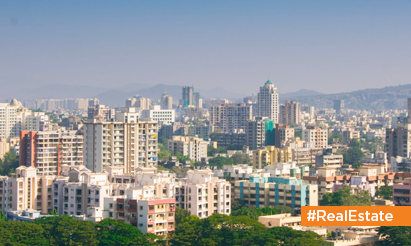Delhi-Meerut RRTS has received Transit-Oriented Development clearance.
The government of Uttar Pradesh (UP) has allowed Transit Oriented Development (TOD) within two kilometres of the Delhi-Meerut Regional Rapid Transit System (RRTS). The 82-kilometre-long corridor from Sarai Kale Khan in Delhi to Modipuram passes through Ghaziabad and Meerut in Uttar Pradesh. The proposal will help developers to choose a higher FAR and stimulate vertical growth in the region. Rural pockets along RRTS are anticipated to gain from certain urbanisation, since residential and commercial centres may expand and contribute to city income generating.
What exactly is Transit Oriented Development (TOD)?
Transit Oriented Development is an urban planning idea that tries to create an accessible neighbourhood to facilitate inhabitants’ hassle-free travel. In 2017, the federal government mandated TOD for states to build sustainable urban-driven development around transportation networks such as metro, rail, and bus systems.
The Delhi-Meerut RRTS is upcoming infrastructure development.
The interstate RRTS will link Delhi, Ghaziabad, and Meerut micro markets. The approximately 82-kilometre project is projected to decrease travel time from three hours to less than an hour. The first phase of the project, which is 17 kilometres long and connects Sahibabad to Duhai, is scheduled to open in March 2023. Whereas the whole RRTS is expected to cost more than Rs 30,000 crore, the UP-government’s share is likely to be approximately Rs 6,500 crore. The Ghaziabad Development Authority (GDA) and the National Capital Region Transport Corporation are in charge of the project (NCRTC).
The potential effect of the TOD policy on Ghaziabad’s real estate landscape
According to analysts, the Ghaziabad neighbourhoods of Muradnagar and Modinagar are anticipated to see an increase in real estate transactions following the introduction of TOD. The TOD zone will benefit from an enhanced Floor Area Ratio (FAR). While it will be set at 3.5 in developed nations, it will be set at five in emerging markets. The GDA aims to expand this into new multi-story structures.
Furthermore, TOD will have an impact on locations within 500 metres on either side of intra- and inter-city bus and subway networks. In the case of RRTS and high-speed rail networks, TOD zones will extend up to 1.5 km on either side of the lines. The TOD regions are estimated to earn around Rs 1,500 crore per year, which would be distributed evenly between the GDA and the NCRTC.
With the RRTS and TOD policies collaborating to urbanise the areas along the corridors, the real estate in Ghaziabad and other related areas are expected to skyrocket.
Disclaimer: The views expressed above are for informational purposes only based on industry reports and related news stories. PropertyPistol does not guarantee the accuracy, completeness, or reliability of the information and shall not be held responsible for any action taken based on the published information.




